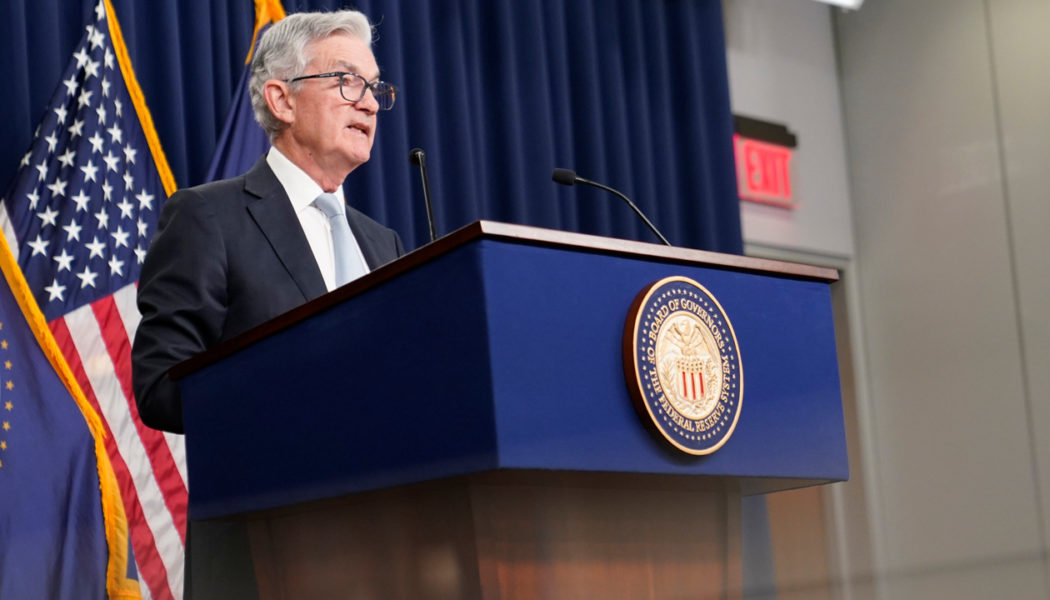
Some investors and U.S. lawmakers like Sen. Elizabeth Warren have warned that the central bank is raising rates too quickly, running the risk of going too far before they realize it. But Fed Chair Jerome Powell emphasized in a press conference that even if the central bank decides to slow down, that doesn’t mean the fight against inflation would be over.
How quickly the Fed raises rates “is now much less important than the question of how high to raise rates,” he said.
Inflation has cooled only slightly and job growth remains strong, but some parts of the economy are already showing signs of strain from the Fed’s rate increases. Manufacturing barely grew in October and the housing market has been hammered by the highest mortgage rates in two decades, leading home sales to decline rapidly and prices to drop in some areas.
Let’s dig some more into what Powell said and what it really means:
“Incoming data since our last meeting suggest that the ultimate level of interest rates will be higher than previously expected.”
This remark was a message for investors: Don’t get too excited at the prospect of the Fed raising rates at a slower pace. Central bank officials are even less optimistic about inflation than they were before and now think that rates will have to go higher than they had projected in September. That means its main policy rate could go to as much as 5 percent.
“I don’t have any sense that we’ve overtightened or moved too fast.”
Here Powell is saying he doesn’t think that, despite the warnings, the central bank has broken anything in the economy — or in financial markets — with its policies even though he acknowledged that it would take time for the full effect of Fed moves to take hold. This means two things: the Fed plans to keep raising rates, and future large increases aren’t off the table entirely.
“We’re now 18 months into this episode of high inflation, and we don’t have a clearly identified scientific way of understanding at what point inflation becomes entrenched. The thing we need to do from a risk management standpoint is to use our tools forcefully but thoughtfully.”
One of the Fed’s biggest fears is that households and businesses will start expecting prices to keep rising at a rapid clip, a psychological effect that can prolong and worsen inflation. Powell is saying he doesn’t know whether we’ve already reached that point, but the Fed will do everything it can to convince the public that it’s committed to stopping this persistent price spikes.
“We keep looking for signs … of the beginning of a gradual softening [in the labor market]. Maybe it’s there, but it’s not obvious to me.”
Powell has repeatedly said that Fed officials want to restore the balance between supply and demand in the labor market, i.e., there are way too few workers for all the jobs out there. Despite rapid increases in interest rates this year, the labor market has so far proven remarkably resilient. Job creation is still strong, while improvement in the labor-force participation rate has essentially stalled, he said. Wage increases are not accelerating, but are still rising at a level higher than officials see as consistent with their 2 percent inflation target. In short, he’s essentially saying the labor market is giving Fed officials little reason to pause rate increases.
“I don’t think wages are the principal story of why prices are going up… I also don’t think we see a wage-price spiral. But … once you see it, you’re in trouble.”
The Fed’s feelings toward the job market are complicated right now. Powell says he wants to see wages going up, but not so fast that they make prices rise even faster. He’s saying that he doesn’t think that wages, which haven’t kept pace with inflation, are the main reason why prices are increasing so rapidly. But unemployment is very low and demand for workers is very high, so he’s still worried about that dynamic appearing.
[flexi-common-toolbar] [flexi-form class=”flexi_form_style” title=”Submit to Flexi” name=”my_form” ajax=”true”][flexi-form-tag type=”post_title” class=”fl-input” title=”Title” value=”” required=”true”][flexi-form-tag type=”category” title=”Select category”][flexi-form-tag type=”tag” title=”Insert tag”][flexi-form-tag type=”article” class=”fl-textarea” title=”Description” ][flexi-form-tag type=”file” title=”Select file” required=”true”][flexi-form-tag type=”submit” name=”submit” value=”Submit Now”] [/flexi-form]









